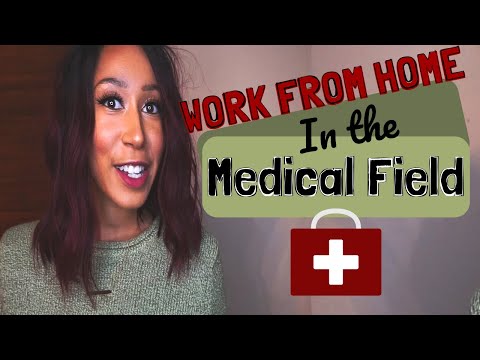How to Buy Health Insurance in Mn
Contents [show]
Find the best health insurance plan for you and your family in Minnesota. Get quotes, compare plans, and find the right coverage for you.
Checkout this video:
Introduction
In Minnesota, as in other states, you can buy health insurance through the state’s marketplace, MNsure. You can also buy it directly from an insurance company, or from a broker or agent.
If you want to buy health insurance outside of MNsure, you can do so directly through an insurance company, or through a broker or agent. Brokers and agents are licensed by the state to sell health insurance plans.
When you’re shopping for health insurance it’s important to compare plans side-by-side to make sure you’re getting the coverage you need at a price you can afford.
What to Look for in a health insurance Plan
In Minnesota, as in all states, health insurance is vital to have. A good health insurance plan will protect you in the event of an accident or illness, and it will also help you to budget for your healthcare costs. There are a few things to look for when you are shopping for a health insurance plan.
Coverage and Cost
When you’re looking for health insurance, it’s important to find a plan that meets your needs in terms of both coverage and cost. You’ll want to consider factors such as the types of services you need, the providers you want to use, and your budget.
There are four main types of health insurance plans:
-HMO (health maintenance organization)
-PPO (preferred provider organization)
-POS (point-of-service)
– HDHP (high-deductible health plan)
Each type of plan has different features, and it’s important to understand the difference before you choose a plan. For example, an HMO plan will typically have lower premiums than a PPO plan, but you may have to see doctors within the HMO network.
When you’re comparing plans, be sure to look at the following factors:
-Deductibles: This is the amount you have to pay for covered services before your insurance company starts to pay. A higher deductible means a lower premium, but it also means you’ll have to pay more out of pocket if you need medical care.
-Co-insurance: This is the percentage of covered services you pay after meeting your deductible. For example, if your co-insurance is 20%, and you have a $100 doctor’s bill, you would pay $20 and your insurance company would pay $80.
Co-pays: A co-pay is a flat fee that you pay for certain services, like doctor visits or prescription drugs. For example, you might have a $20 co-pay for office visits.
Premiums: This is the amount you pay each month for your insurance coverage. Keep in mind that your premium is just one part of your overall costs – you also have to consider deductibles, co-insurance, and co-pays.
Provider Networks
Choosing a plan with an in-network provider is important. An in-network provider is a healthcare professional that has a contract with your health insurance company to provide care at negotiated rates. This means that when you visit an in-network provider, you will only be responsible for copayments, coinsurance, and deductibles that are outlined in your health insurance plan. In contrast, if you visit an out-of-network provider, you may be required to pay the full cost of your care.
Prescription Coverage
One of the benefits that you may want to consider when choosing a health insurance plan is prescription coverage. This type of coverage can help you pay for the cost of prescription medications. Some plans may cover all or part of the cost of prescriptions, while others may only cover a portion of the cost. Before you enroll in a plan, you should check to see what type of prescription coverage is available.
Mental Health and Substance Abuse Coverage
Mental health and substance abuse disorders are common in the United States, with one in five adults experiencing a mental illness and one in ten adults experiencing a substance use disorder in any given year. Mental health and substance abuse coverage is an important part of any health insurance plan, but it can be difficult to find a plan that covers these services.
There are a few things to look for when you’re shopping for health insurance coverage for mental health and substance abuse disorders:
1. Make sure the plan covers mental health and substance abuse services.
2. Find out if there are any limits on the amount of coverage you’ll receive.
3. Ask about the providers that are covered under the plan.
4. Make sure you understand the copayments and deductibles associated with mental health and substance abuse services.
5. Find out if there are any pre-existing conditions that will not be covered under the plan.
How to Shop for Health Insurance
The Health Insurance Marketplace in Minnesota can be found on the MNsure website. You can shop for health insurance on MNsure by creating an account and logging in. After you have logged in, you will be able to see all the health insurance plans that are available to you. You can then compare the plans and see which one is the best for you.
Researching Plans
Finding the right health insurance plan for you and your family can be a complex and time-consuming process. But it’s worth it, because having health insurance is one of the best ways to maintain good health and protect yourself financially in case of an unexpected illness or injury.
There are a few different types of health insurance plans available in Minnesota, and each one offers different levels of coverage. So how do you know which plan is right for you? The first step is to do some research and understand the different types of plans that are available.
Getting Quotes
The first step to shopping for health insurance is getting quotes. Quotes are estimates of what a policy might cost based on the information you provide, such as your age, location, and projected health care needs.
You can get quotes from insurance companies, agents, or brokerages. There are also online quoting tools, like eHealthInsurance, that will give you quotes from multiple insurers at once.
When you get a quote, you’ll want to make sure it includes the following:
-The monthly premium (the amount you’ll pay for the insurance every month)
-The deductible (the amount you’ll have to pay out-of-pocket for medical expenses before the insurance company starts paying)
-The copayments and coinsurance (the amount you’ll have to pay for each doctor’s visit or prescription)
-The lifetime and annual limits (the maximum amount the insurer will pay out over the life of the policy or in one year)
Applying for Coverage
Most health insurance plans have an open enrollment period each year during which you can apply for coverage. If you need to purchase health insurance outside of this time frame, you may be able to do so if you qualify for a special enrollment period due to a qualifying life event.
If you’re shopping for health insurance for the first time, it can be helpful to understand some of the terminology. Here are a few key terms that you’ll come across as you research your options:
Premium: This is the amount you’ll pay each month for your health insurance plan. Your premium will be based on factors like your age, where you live, whether you smoke, and the level of coverage you choose.
Deductible: This is the amount you’ll have to pay out-of-pocket for medical expenses before your health insurance plan begins to pay. For example, if your deductible is $1,000 and you have a $2,000 hospital bill, you’ll pay $1,000 and your health insurance will cover the remaining $1,000.
Co-pay: This is the set fee that you’ll pay for certain medical services when you receive them. For example, if your doctor visit co-pay is $20 and you visit the doctor for a cold, you’ll pay $20 at the time of your visit.
Conclusion
The main takeaway is that the health insurance market in MN is very complex. There are a lot of different options available, and it can be difficult to figure out which one is right for you. The best way to find the right health insurance plan is to use the services of an independent insurance agent. An independent insurance agent will be able to help you understand the different options available and find a plan that meets your needs.







